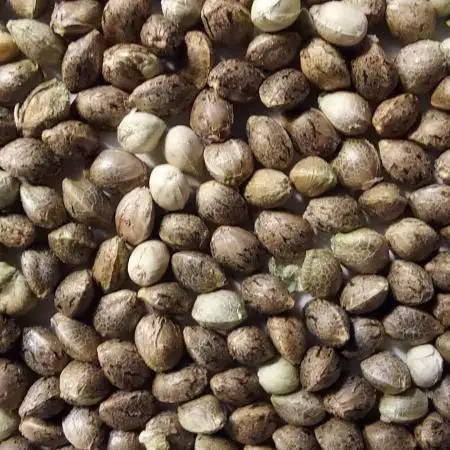The Grow Awards 2026 🏆 
















Search: Budget Friendly Grow Light
HandsomeTerpzstarted grow question 6mo ago
Hey growers!
I'm on the hunt for a budget-friendly grow light that still delivers maximum results.
It’s for a tent size of 80 x 80 cm and will need to support 3 plants.
Does anyone from the European/German region have a solid recommendation? 🙏
Thanks in advance for your tip
Solved
Other. Other
likes
00110001001001111Oanswered grow question 6mo ago
You mostly pay for efficacy. The results will be the same unless the extra heat produced by cheaper lights causes a problem. Obvioulsy, plenty of ways to mitigate that.
Cost of ownership - spend a little more today and you save more over the lifetime of the product.
There are lots of things you should absolutely stick with generics on, but a light can be found with good efficacy for a fair price.
.8*.8 is .64m^2
18-hour operation needs about .64 * 600 = 380-400 umol/s PAR produced from the light.
12-hour operation needs about .64 * 900 = 575-600 umol/S PAR
If you only grow autoflowers and absolutely no intention to ever grow photoperiods, any light with true specs near that 400umol/s production of photons will be safely at the higher end how much light you can provide with ambient co2.
If you have any intent to grow photoperiods, buy a light that produces about 600umol/s of PAR
+/- 5% won't matter much.
After that efficacy is the concern. You can discern lies with some simple math. LM301 didoes only -- higher efficacy lights will be powering individual diodes at .2-.25 watts per diode. Dividing watts / diode count will give a rough estimate... a few percent of diodes being different is mostly inconsequential for the level of precision needed here.
Avoid the lights up around 0.5 watts per diode and higher for sure. They have cut the corners WAY too much on diode count. heat production will be high and extra electricity costs every month of use add up to more than the price differnce more times than not.
Even if they used more expensive 'binning' options for the lm301 diodes, you might still get good efficacy but longevity is shortened nonetheless when you over power these diodes.
samsung.com tests at .2watts per... anything above that shortens life rather quickly and reduced efficacy compared to samsung's test specs. This is how you discern accurate specifications from manufacturer vs manufacturers that lie their asses off while hoping you are none the wiser.
GrowX420answered grow question 6mo ago
Check the lights from Green Ception ✅
They are really good with farred
https://www.gbk-shop.de/greenception-led-gc-pure-80w
likes
Complain
MrGrowDiarieanswered grow question 6mo ago
Mars hydro ts 1000 for 80 euros is the best for 60x60 or und get the tsw2000 its good too for less
2 likes
Complain
00110001001001111Oanswered grow question 6mo ago
Anything 2.8 - 3.0 umol/J is 'high' efficacy. the problem is whether the manufacturer is lying or not when they list it.
2 likes
Complain
Hashyanswered grow question 6mo ago
Viparspectra, Mars hydro, spiderfarmer, medic grow. Budget friendly lights that work extremely well.
3 likes
Complain
All_our_small_plantsanswered grow question 6mo ago
also wenn du Günstige (unter wie viel) suchst aber trotzdem was bringen sollen dann empfehle ich die entweder die
-Mars Hydro TS 1000 kostest so 130 euro und hat 150 Watt oder
-Spider Farmer sf1000 diese hat nur 100 Watt ist aber auch top Kostet so um die 100€ bei Amazon oder Spider Farmer EU. (diese Benutze ich selbst in bin sehr zu frieden) habe davon 3 im Einsatz.
mit anderen kenn ich mich nicht so gut aus.
4 likes
Complain
Similar Grow Questions
Solved

Killerbubu
AJudaaa por favorNão sei o que será isto, o que acham que pode ser ?
Week 5
Other. Other
4y ago
1
Solved

SAC87
Cross pollinationHi there, I’m growing autos outdoors and am wondering if anyone has tried to grow around hemp fields. I’m wondering if the male hemp pollen will cross pollinate to my plants? I grew 4 last year and they were full of seeds. This years amnesia haze seems to have seeds. ThanksWeek 9
Other. Other
5y ago
3
3
Solved

Gionny
Possible light cycle problem with photoperiodicsI started 3 fotoperiodics in my grow room to give them 1 extra month veg phase, once the conditions are right I’ll put them outside
Problem is that they are now at 18/6 light cycle
Outside are 14 light hours
Will they start to flower right away or will they remain in veg phase?Other. Other
5y ago
1
1
Solved

Lasninasverdes
Las paso a floración ??Llevo 6 semanas con el
Cultivo en un armario de 80x80 y un led de 150w . ¿Creéis que podría pasarlas a floración ??
Gracias fumones. :)
Other. Other
Plant. Other
Techniques. LST
4y ago
11
6
Solved

Dangster
Colloidal silver seeding problemsI have been applying colloidal silver to a couple of bud sites on 3 separate plants for over 25 days morning and night sometimes 3 times a day. These are all autos and I'm still not seeing any male flowers. How long should I expect to waitOther. Other
4y ago
4
Solved

bobo66
has anyone tried this 45W led lamp?It has a purple glow ,how high should it be and how much space can it cover normally?I gave it to a friend because he didn't need it, but he never used it. He doesn't know where he bought it, but if he remembered it came from a wish. want to keep clones, would this lamp be suitable for this purpose?
Other. Other
Setup. Clones
4y ago
1
5
Solved

CrowMaster
Diary format?Is there a way to change diaries to photos?it seems to be set up for autos.I don’t even start counting till I flip lights some plants are kept.so a strait journal from seed to harvest is a auto thing.plus I take clones for more then one room so would have to start one from flower
Week 4
Other. Other
4y ago
4
Solved

TheeLemon
Hermy??I just spotted these hiding under the canopy... Has this hermied?
Week 9
Other. Other
4y ago
6
5
Solved

blindspot
Flushing TimeHi all, I was thinking about when should I start to flushing. It looks like they have 2 more weeks to flush and harvest. I guess there will be 3 more watering day if i do it in every 4 days for the one of them. Because another one was started to growing 2 weeks later.
Other. General questions
Other. Other
4y ago
4
4
Solved

Rinna
How do I make this bonsai stretch moreHi everyone, I'm just wondering if there's a way to make her stretch more. She's not growing very fast, which makes sense, but I just need those two branches to stretch as much as possible. Hoping someone might have some tips and/or tricks! 🙏Week 9
Other. Other
4y ago
2
Solved

Boneco
Corte apicalMelhor altura para fazer corte apical ? O que aconselham ?Week 2
Other. Other
4y ago
2

















